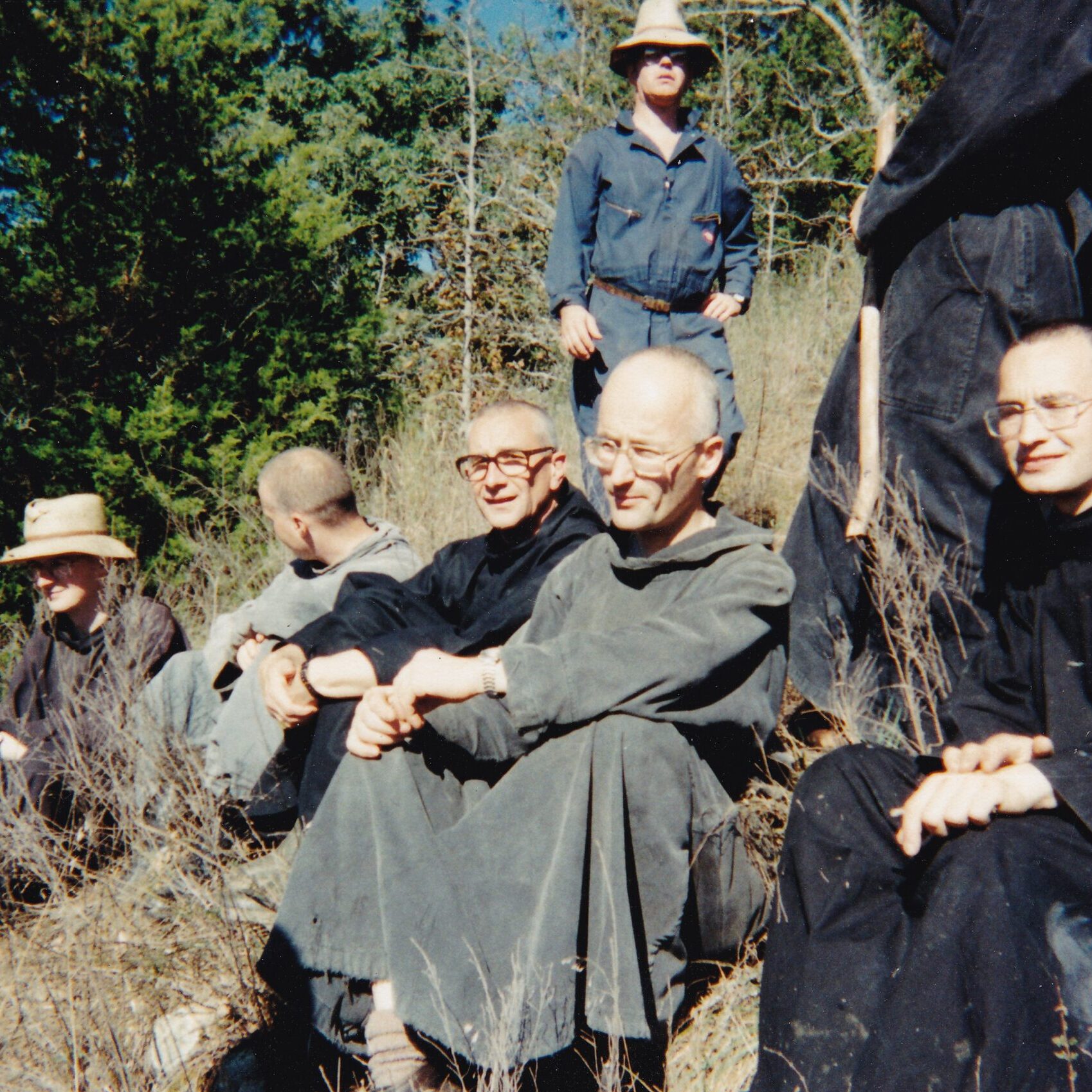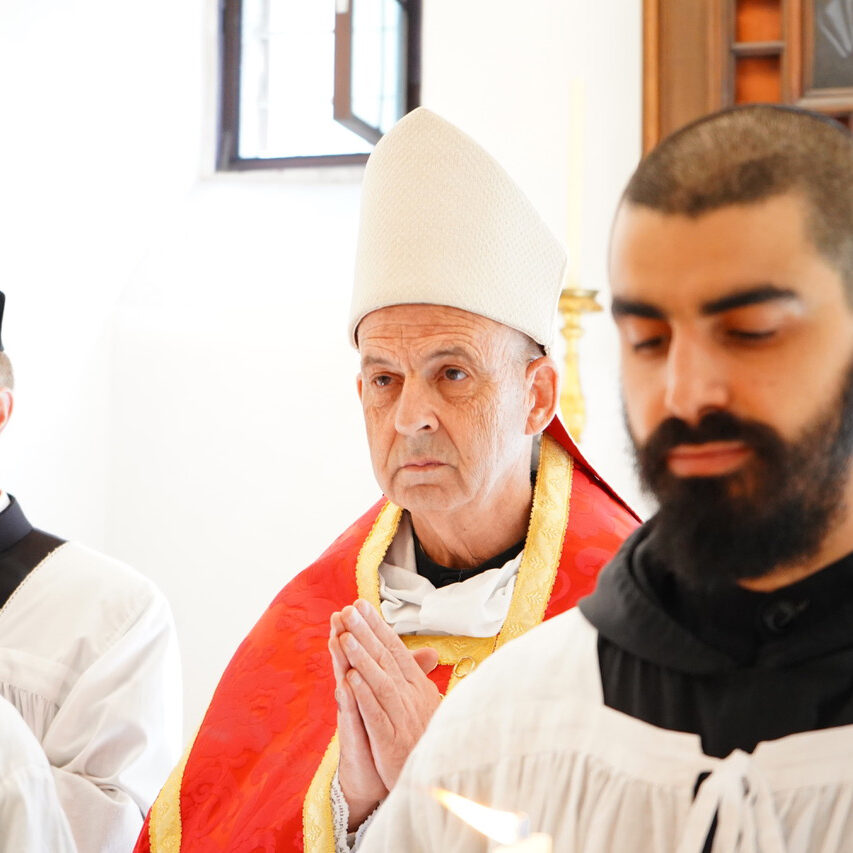Dear Friend of Clear Creek Abbey,
In the book of Amos we read the following reflection: “No wonder the prudent man keeps silent, the times are so evil.” (Amos 5:13) Sometimes, however, a man must speak, especially in perilous times. Many of you are concerned about the Traditional Latin Mass, whose fate is in the balance as I write this. In fact, there is much to worry about even beyond the question concerning the Latin Mass.
As has happened in the past, the Church, like a great ship, is now passing through a narrow stretch of treacherous water, so to speak, where great perils lurk on either side. On the port side there waits Scylla (to use a Homeric comparison), the evil sea monster of heresy, the tentacles of which have already laid hold of not a few members of the sacred hierarchy and faithful. As just one small example of this, it has been credibly reported that the Archbishop of Lima, Carlos Castillo Mattasoglio, speaking on December 19 this past year, stated that Jesus died as “a layman,” and did so without offering a “sacrifice.” (Catholic News Agency, Dec. 26, 2021) Off the starboard we must fear the swirling whirlpool of schism, Charybdis, which can swallow the faithful into the depths of hell: extra Ecclesiam nulla salus (Outside the Church there is no salvation). Not a few traditionalists have been courting ideas that could pull them under. What is to be done?
It is all somewhat like the scene in the Gospel according to Saint Matthew:
And when [Jesus] entered into the boat, his disciples followed him: And behold a great tempest arose in the sea, so that the boat was covered with waves, but he was asleep. And they came to him, and awaked him, saying: Lord, save us, we perish. (Matthew 8:23-25)
We monks tend to see these things in terms of what we have learned from monastic tradition, in particular from the Holy Rule of Our Blessed Father Saint Benedict. His attitude is always that of a true spiritual father, and he clearly says that he means to lay down nothing that is too rigorous, nihil asperum nihilque grave. But if things do get narrow in the sense of what Christ Himself taught us about the “narrow way,” in that case, says Saint Benedict:
Do not… fly in dismay from the way of salvation, whose beginning cannot but be strait. But as we go forward in our life and faith, we shall with hearts enlarged and unspeakable sweetness of love run in the way of God’s commandments. (Holy Rule, Prologue)
So we must not abandon the ship, even if we hear some of the sailors send up the dreaded cry, “All lost! to prayers, to prayers! all lost!” (Shakespeare, The Tempest, Act I, scene 1) However, the trial for the Church has not yet ended, and we continue to cry out, Domine, salva nos, perimus! When will come for us the calming of the storm?
An interpretive key is found in another dramatic page of the Bible. When his boat bound for Tarshish fell into a great tempest, the prophet Jonas recognized that the only way for the sailors to save themselves was to throw him into the sea. But the Lord raised the well-known story to a new level, when He declared: “For as Jonas was in the whale’s belly three days and three nights: so shall the Son of man be in the heart of the earth three days and three nights.” (Matthew 12:40) It is not we who must be thrown into the sea (though we much deserve it for our sins), but it is the only One who can find His way out of the whale’s belly after three days and nights who must suffer. The Passion and Resurrection are at the heart of human history and at the heart of Holy Mass. Here also resides the power to calm the storm.
There is but one Mass, as there is but one God, one Church, one Baptism, and one Faith. Multiple, however, are the authentic manners of celebrating this Blessed Sacrament; numerous are the rites celebrated in communion with the Roman Catholic Church. It was the teaching of Pope [now Emeritus] Benedict XVI that the Roman rite itself could and should have two forms: the ordinary and the extraordinary. Pope Francis has now decided that there is to be just one form of the rite, the one promulgated after the Second Vatican Council. (Motu Proprio, Traditionis Custodes, July 16, 2021) What will now happen to communities dedicated to the earlier liturgical practice?
In any case, the Catholic faithful will always be right to aspire to a celebration of Holy Mass that is in perfect continuity with the past and which does not let any of the treasures of twenty centuries be somehow lost. This is the living, organic tradition. “What earlier generations held as sacred, remains sacred and great for us too, and it cannot be all of a sudden entirely forbidden or even considered harmful. It behooves all of us to preserve the riches which have developed in the Church’s faith and prayer, and to give them their proper place.” (Benedict XVI, Letter to Bishops, July 7, 2007)
So, what must we do? Well, we must “look lively” as the sailors say. “All hands on deck! Reef the topgallant royals! Batten the hatches…” We must sail bravely on, in true obedience and complete fidelity, despite the perils, with the grace of God and under the maternal gaze of Our Lady. And thus, as we “go forward in our life and faith, we shall with hearts enlarged and unspeakable sweetness of love run [and sail] in the way of God’s commandments.”
br. Philip Anderson, abbot







